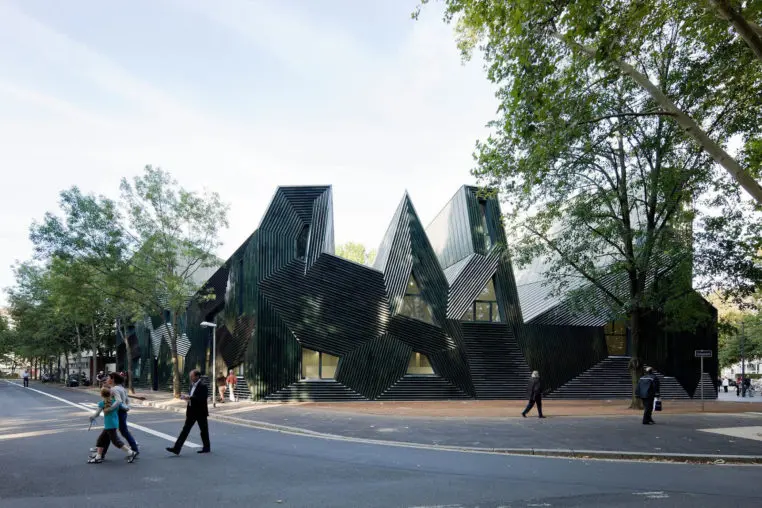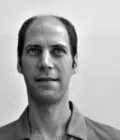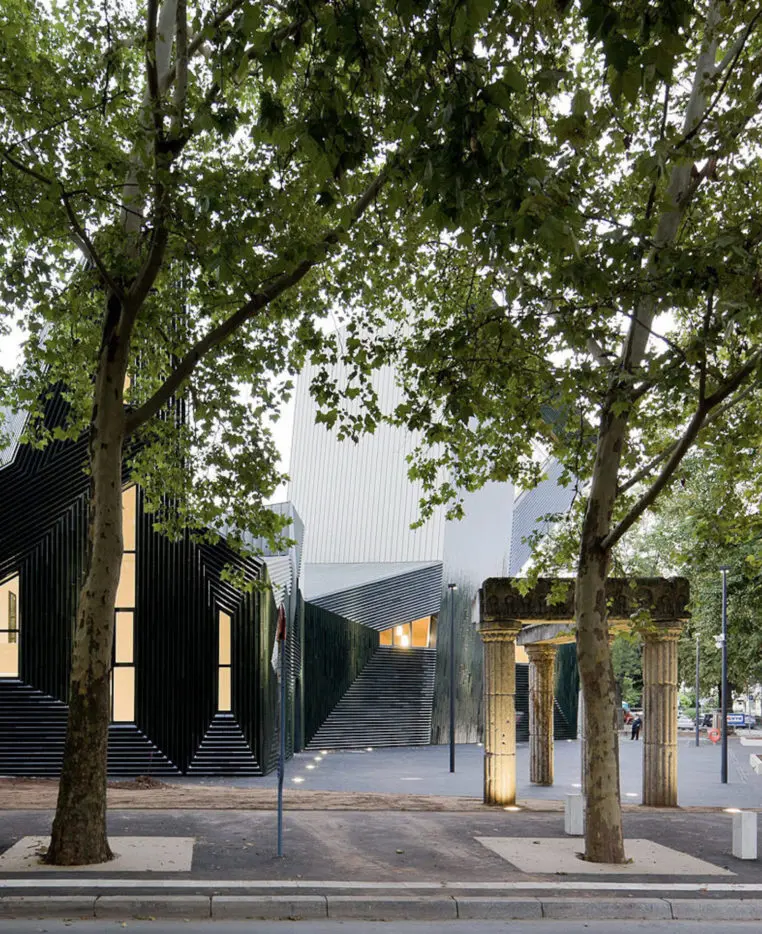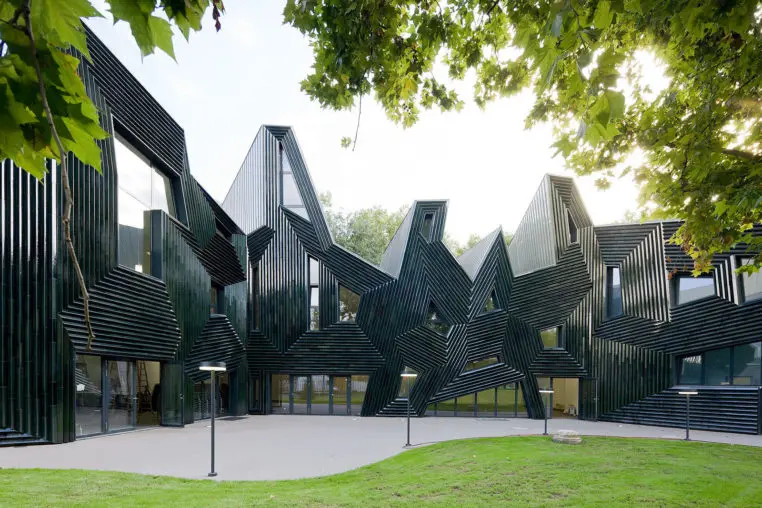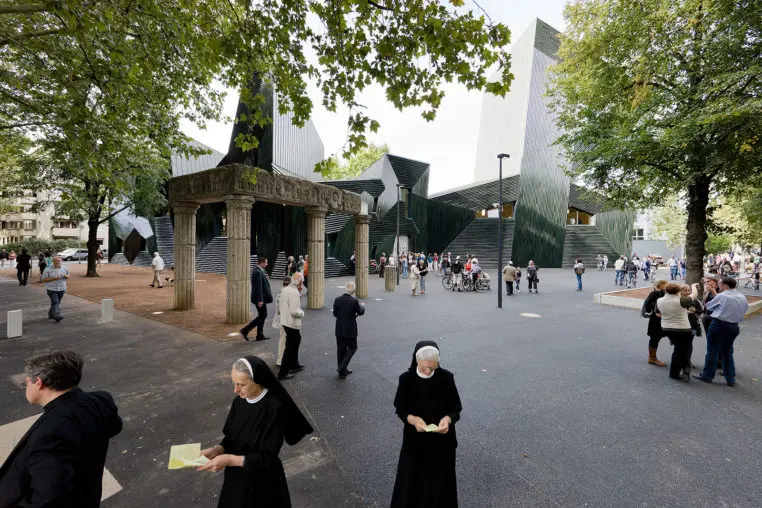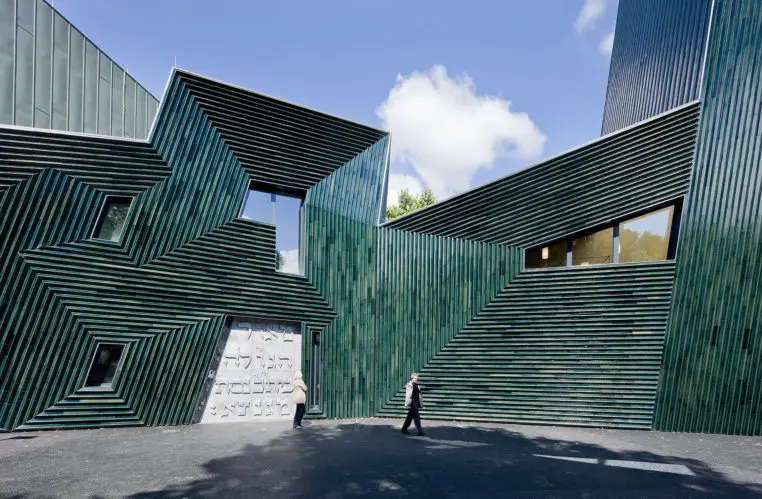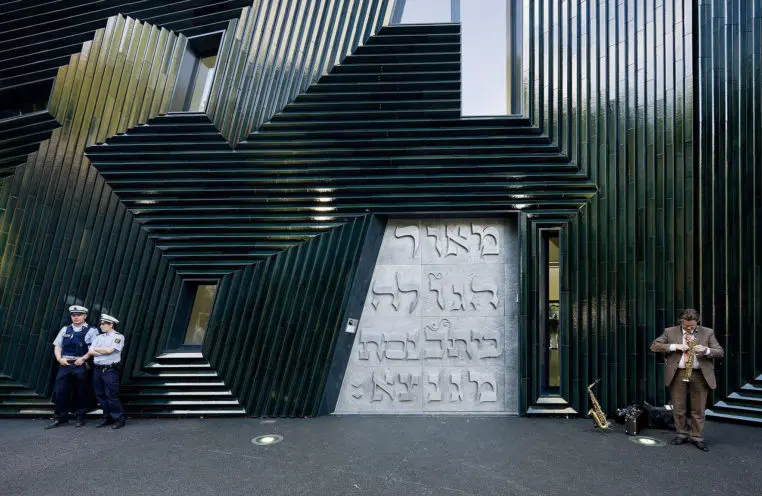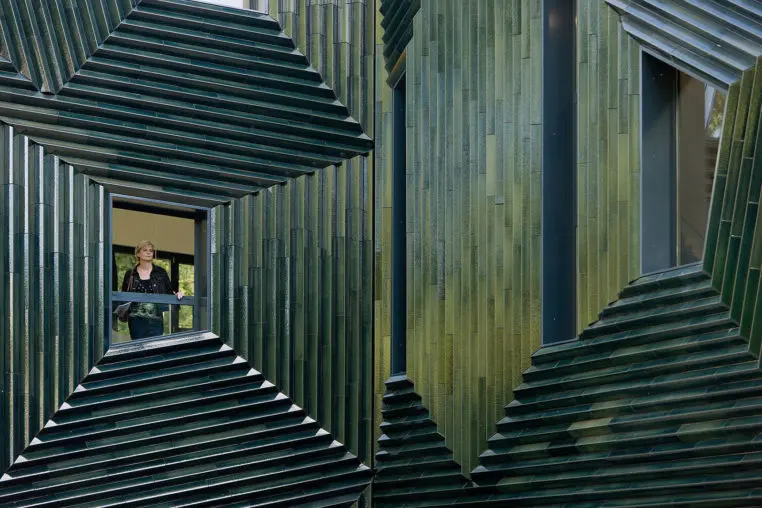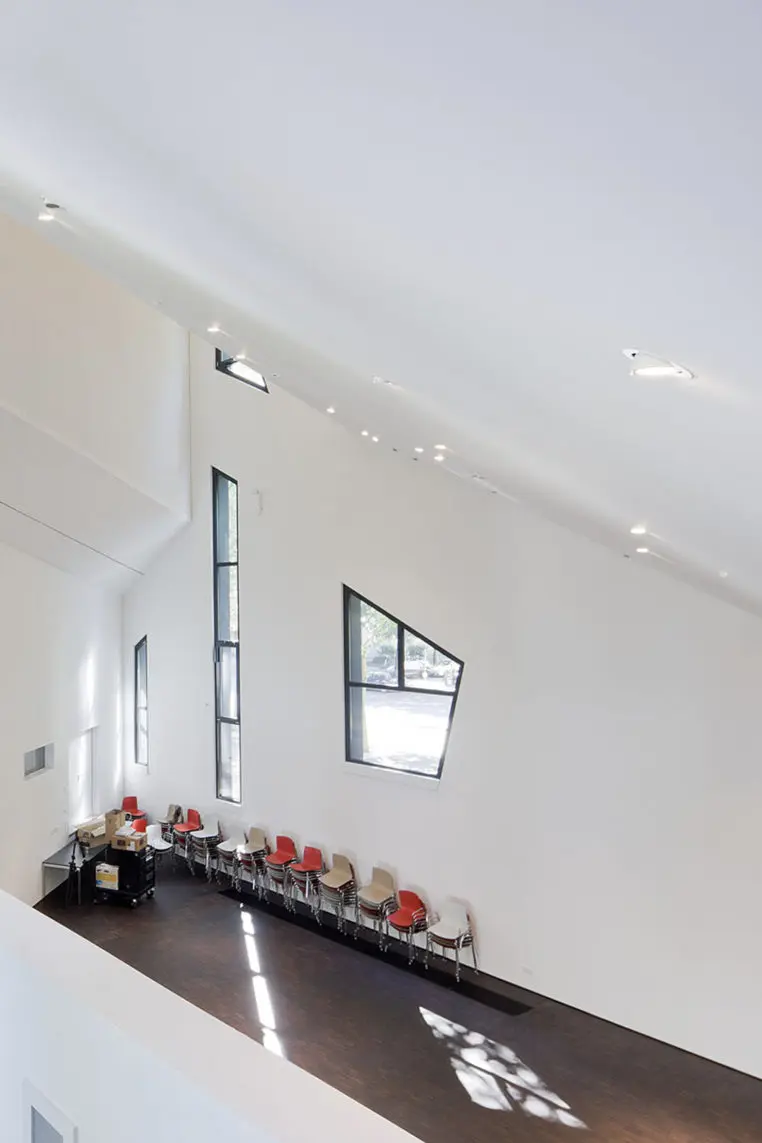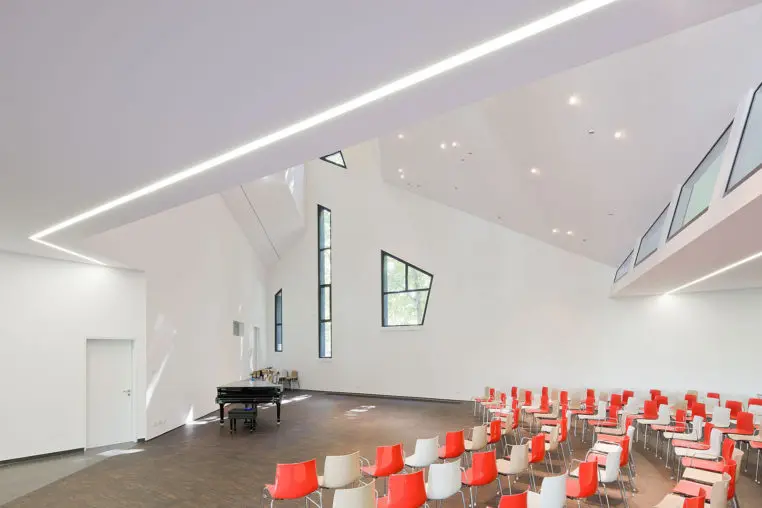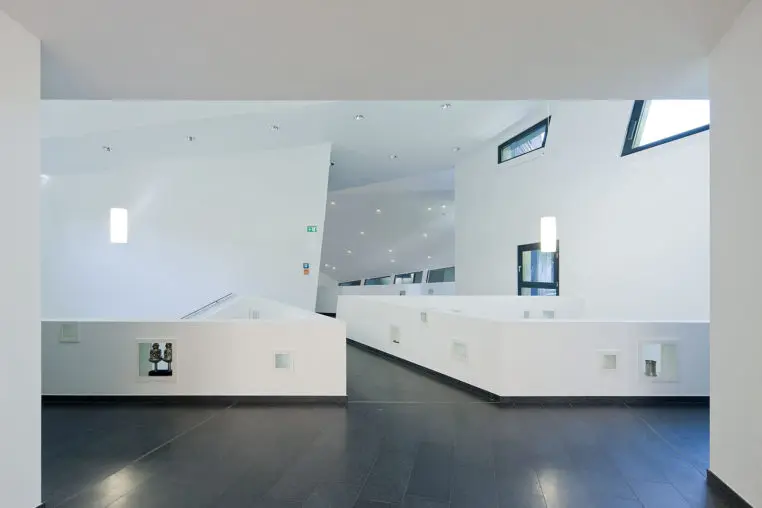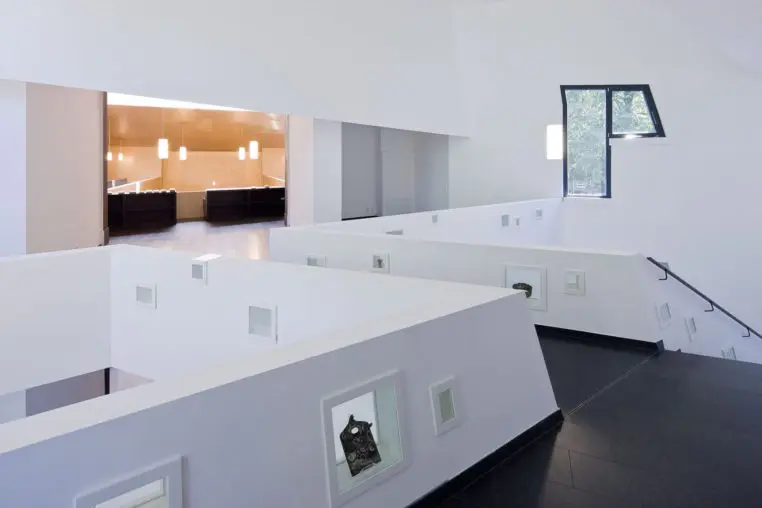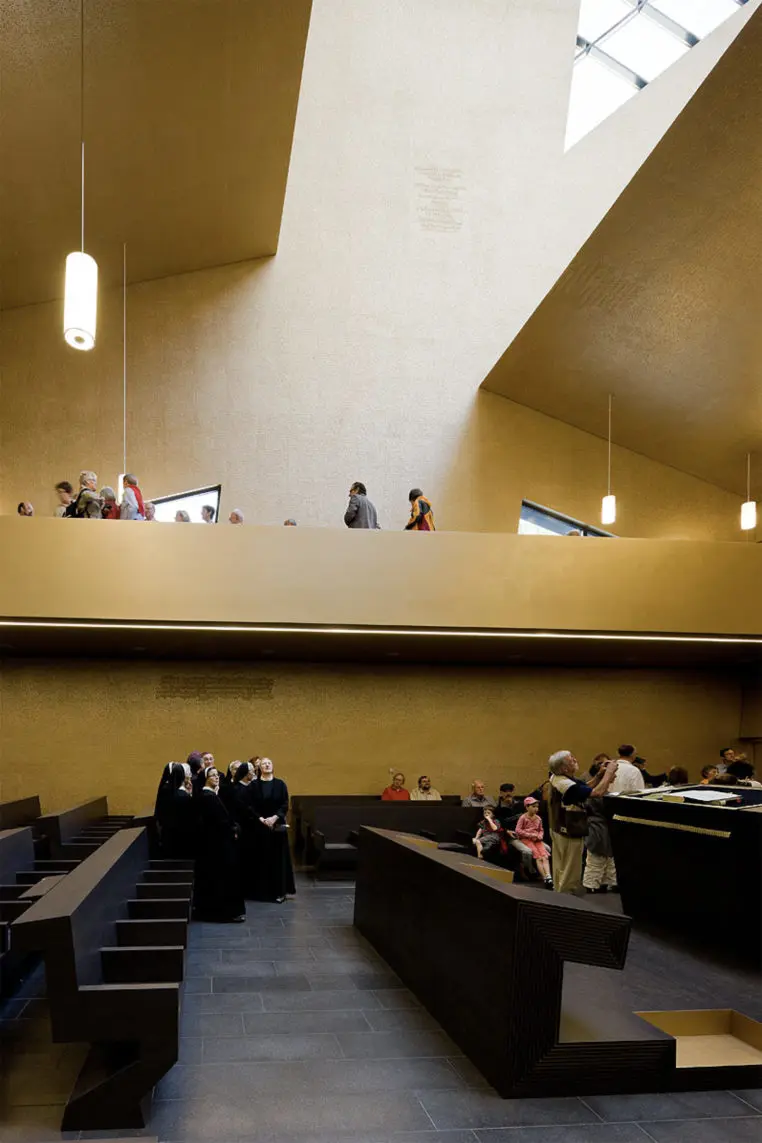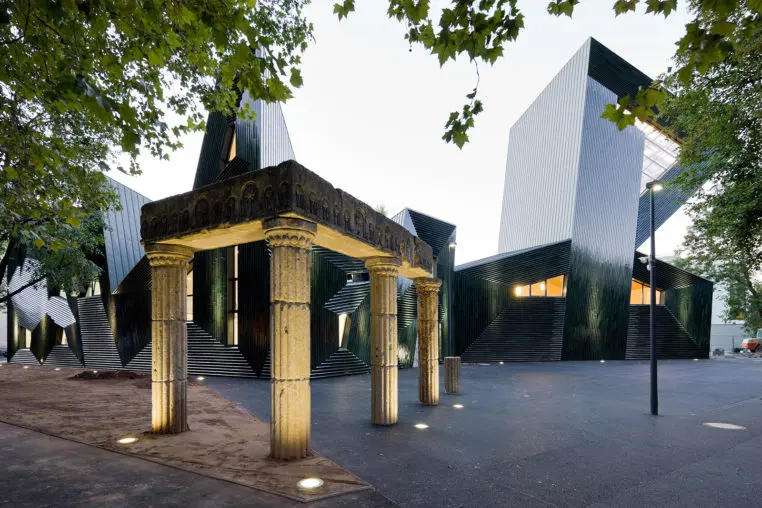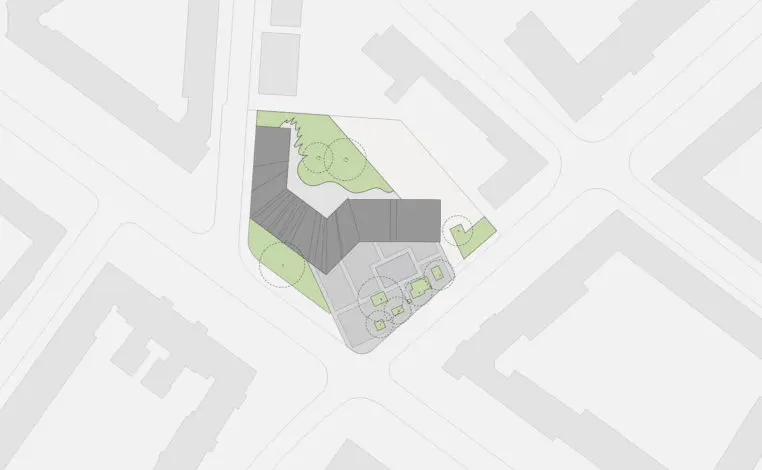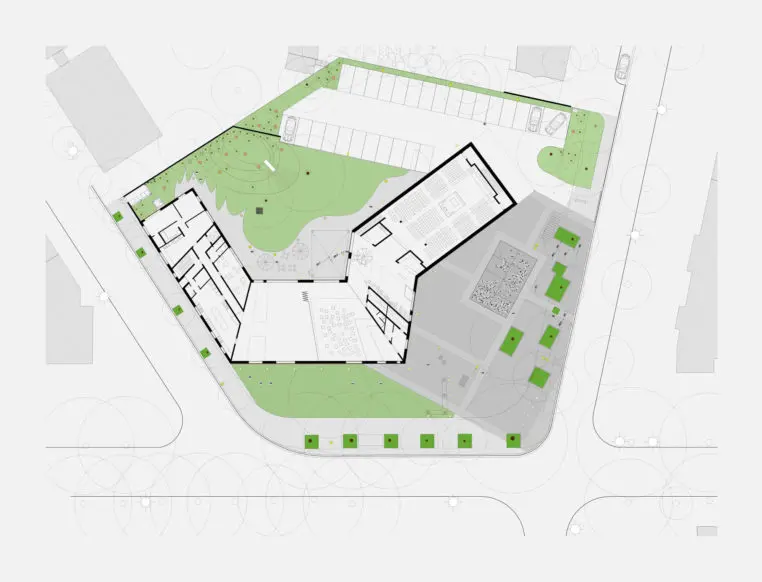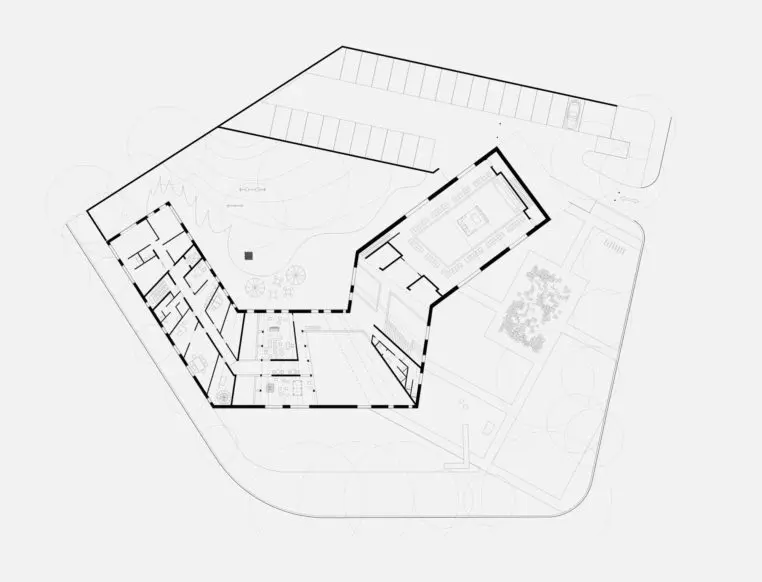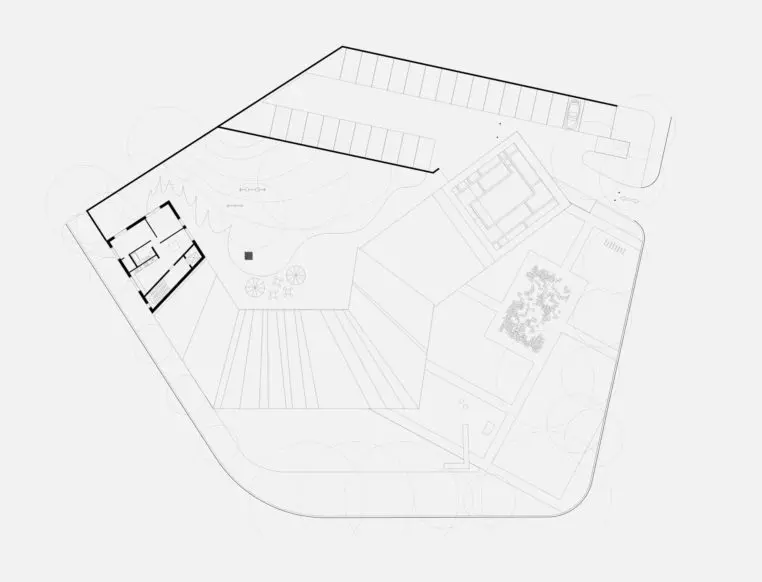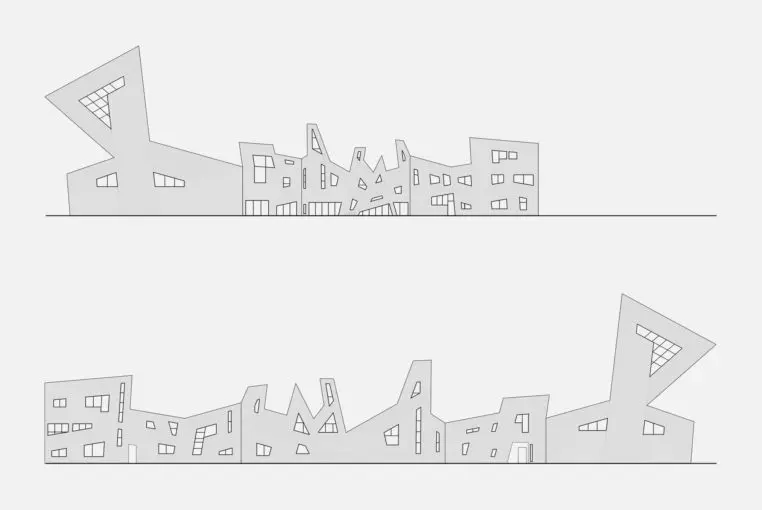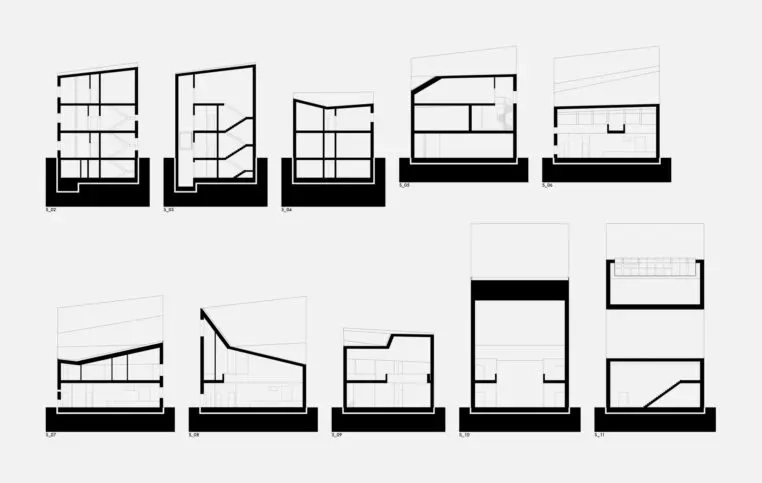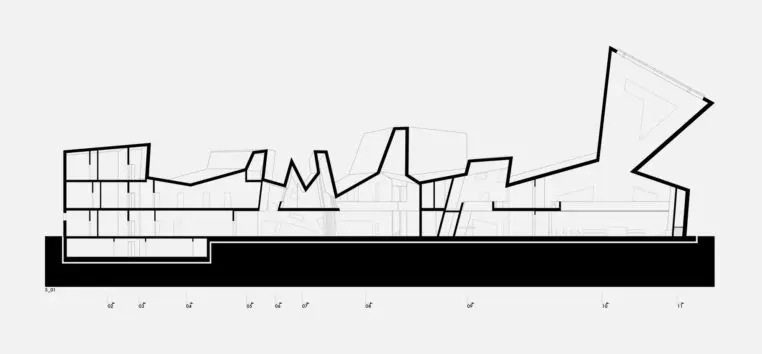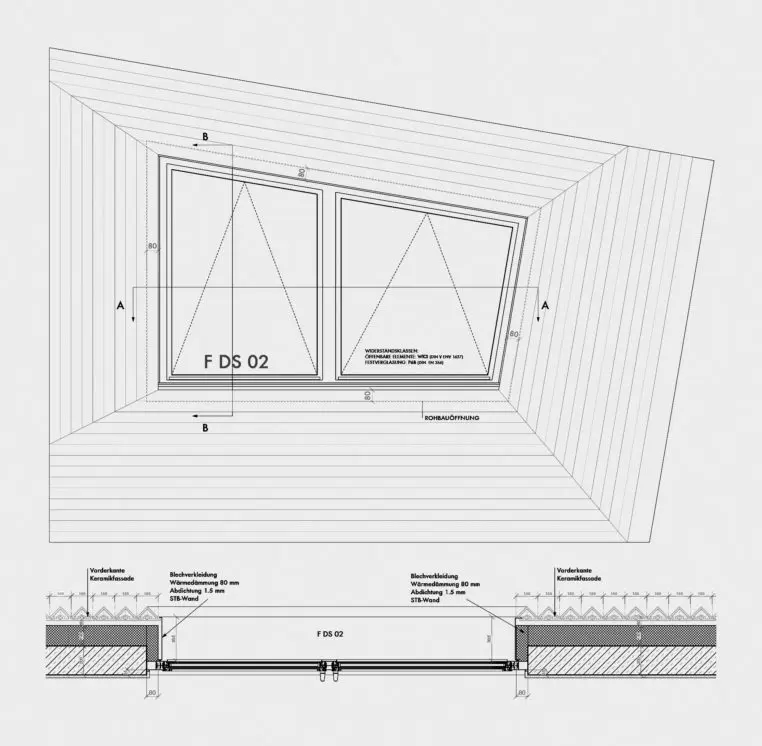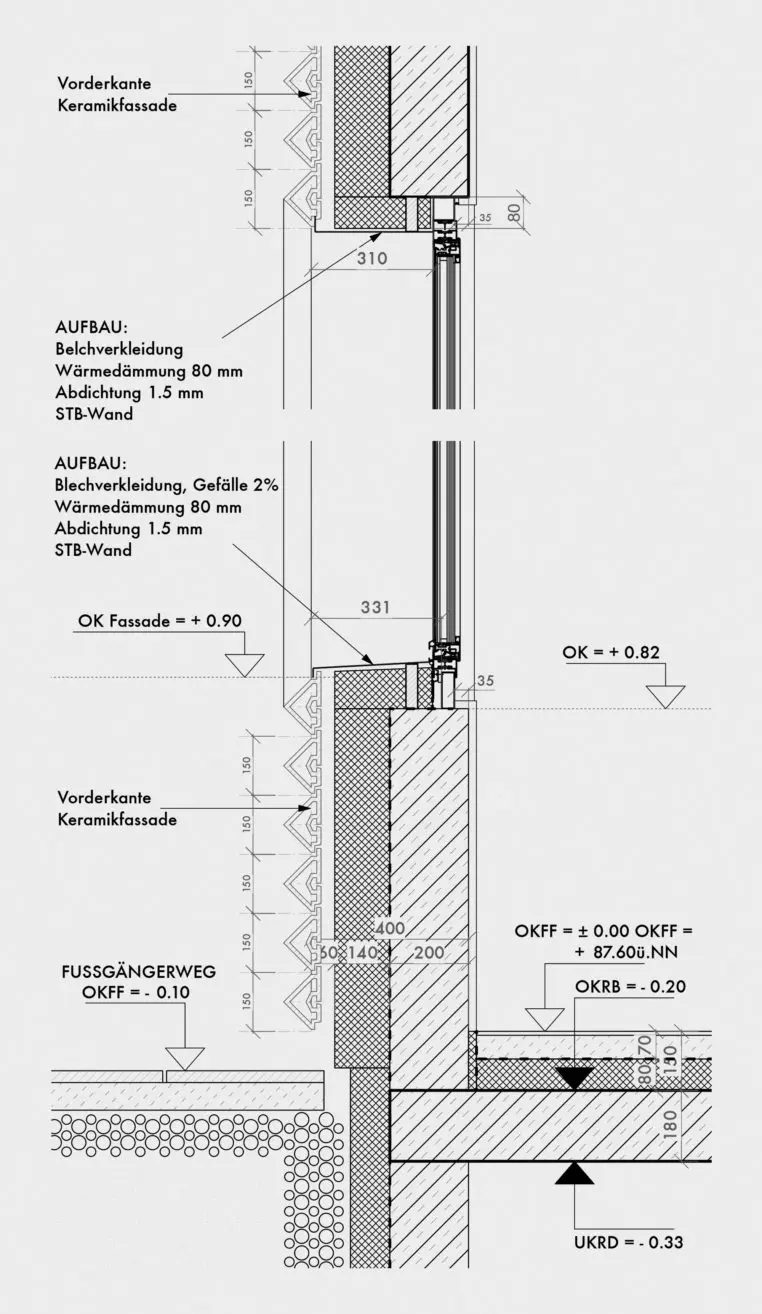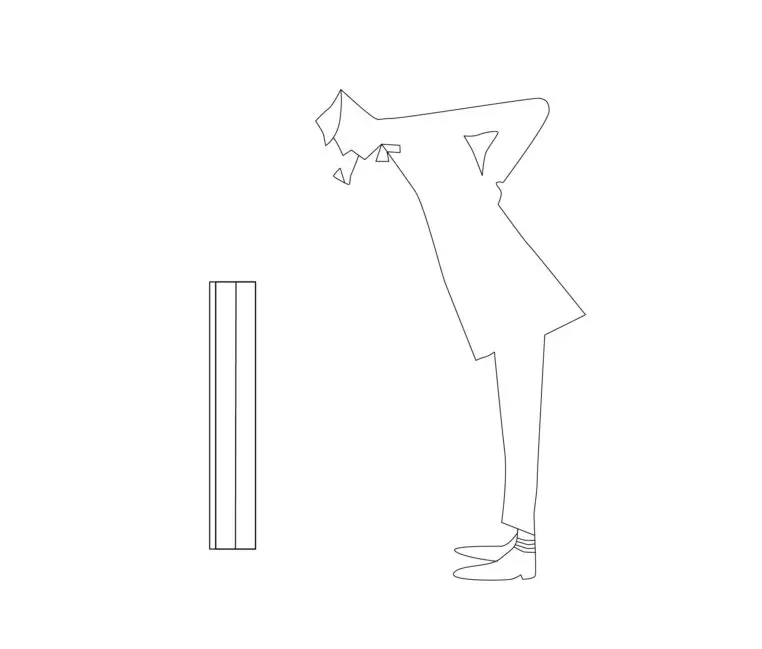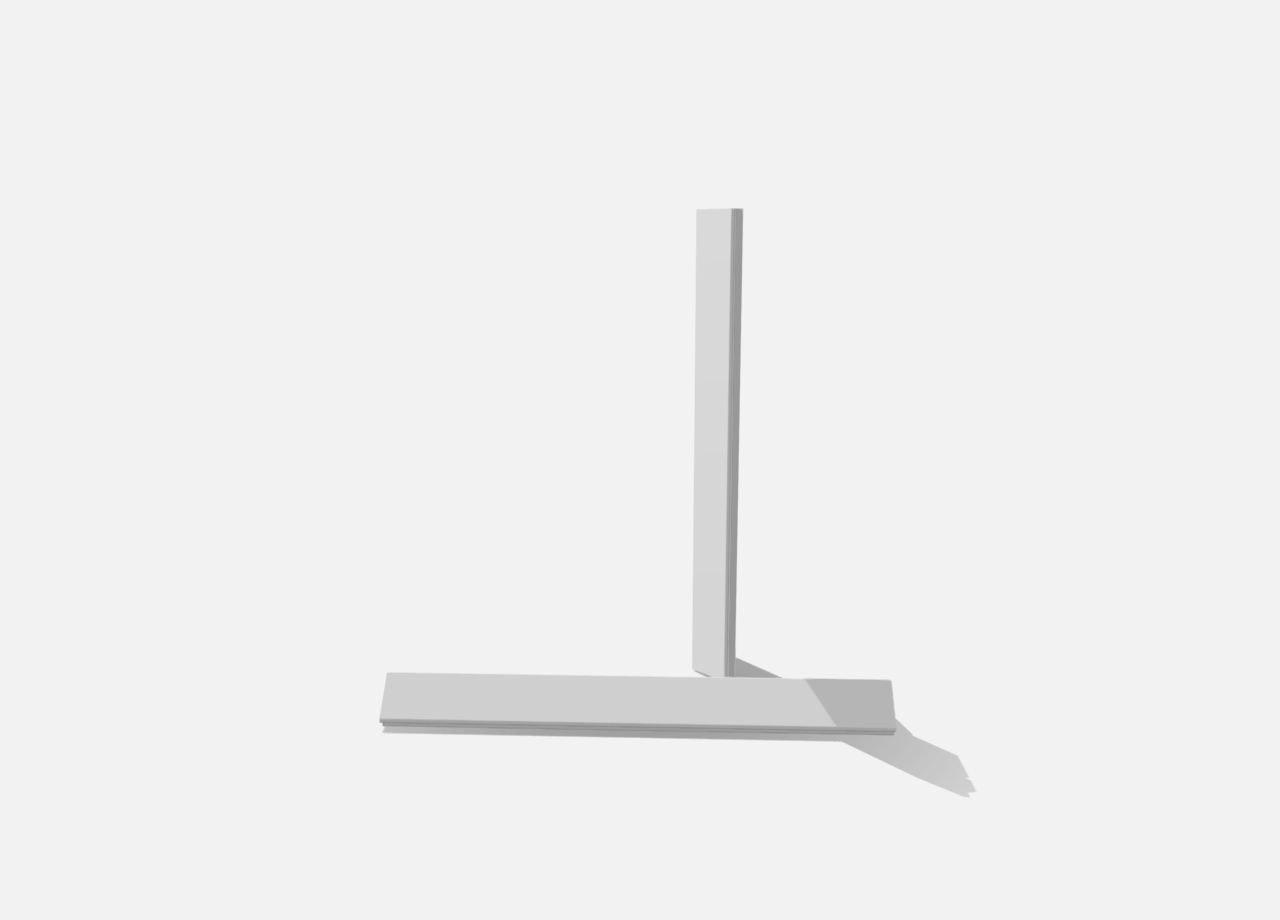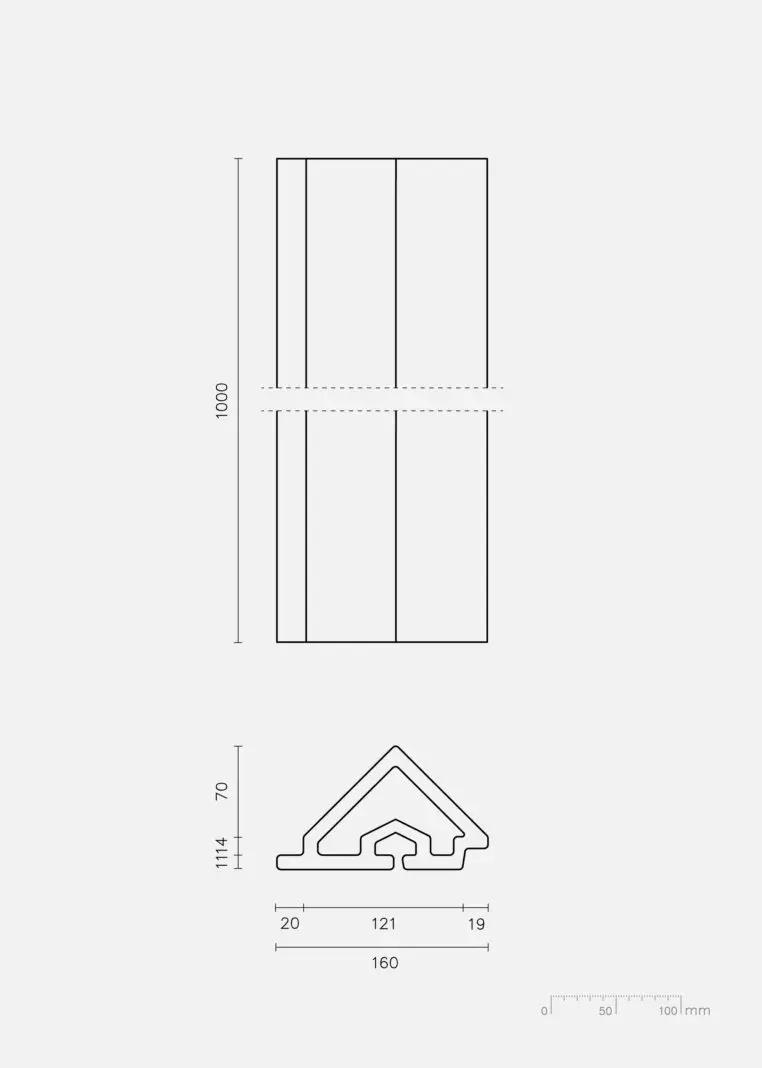In its history Judaism has never developed a strong tradition of building. Nor has it developed architectural styles that, as is the case in other religions, try to translate certain values and credos into built space. Instead, writing and scripture could be seen as a replacement or substitute for spatial production in Judaism. Qualities of writing, as well as the concept of the Talmud (which found its central place of learning in the city of Mainz) as a notion of space, form the main design topics of the building for the Jewish community center of Mainz. In fact, קדושה(Qadushah) is the Hebrew word for raising or blessing, whose five characters in an abstracted way shape the silhouette of the building.
It is this act of making special that the building, in its everyday use, should allow for. In order to integrate the Jewish community center into the residential neighborhood of the “Mainzer Neustadt”, dating back to the late 19th century, the ‘perimeter block pattern’ (Blockrandbebauung) dominant in the area is used as an urban concept. The volume of the building is situated parallel to the streets and its facades are in line with the existing neighboring buildings, thus creating a contained street space. The use of the urban figure of the perimeter block pattern for the building, highly unusual for religious buildings, also questions the position of sacrality within the urban context. By orienting the part of the building housing the synagogue towards the East two squares or courtyards are created: a public square in front of the main entrance offering an open space to the neighborhood within a densely built-up urban fabric, and an internal garden for the community offering spaces for recreation and celebration.
The synagogue is accessed through the main foyer and its organization is spatially resolved by a horn-like roof that distinctly orients the space towards the East, but bringing the light right into the center of the space, falling exactly onto the position from where the Bible is read. Its interior surfaces are shaped by densely packed Hebrew letters forming a mosaic-like relief. Furthermore, the Jewish community center houses office spaces, school rooms and two apartments as well as the multipurpose space of the community, which represents the social and cultural heart of the community and will be used for internal purposes as well as for public events for and by the whole city.
